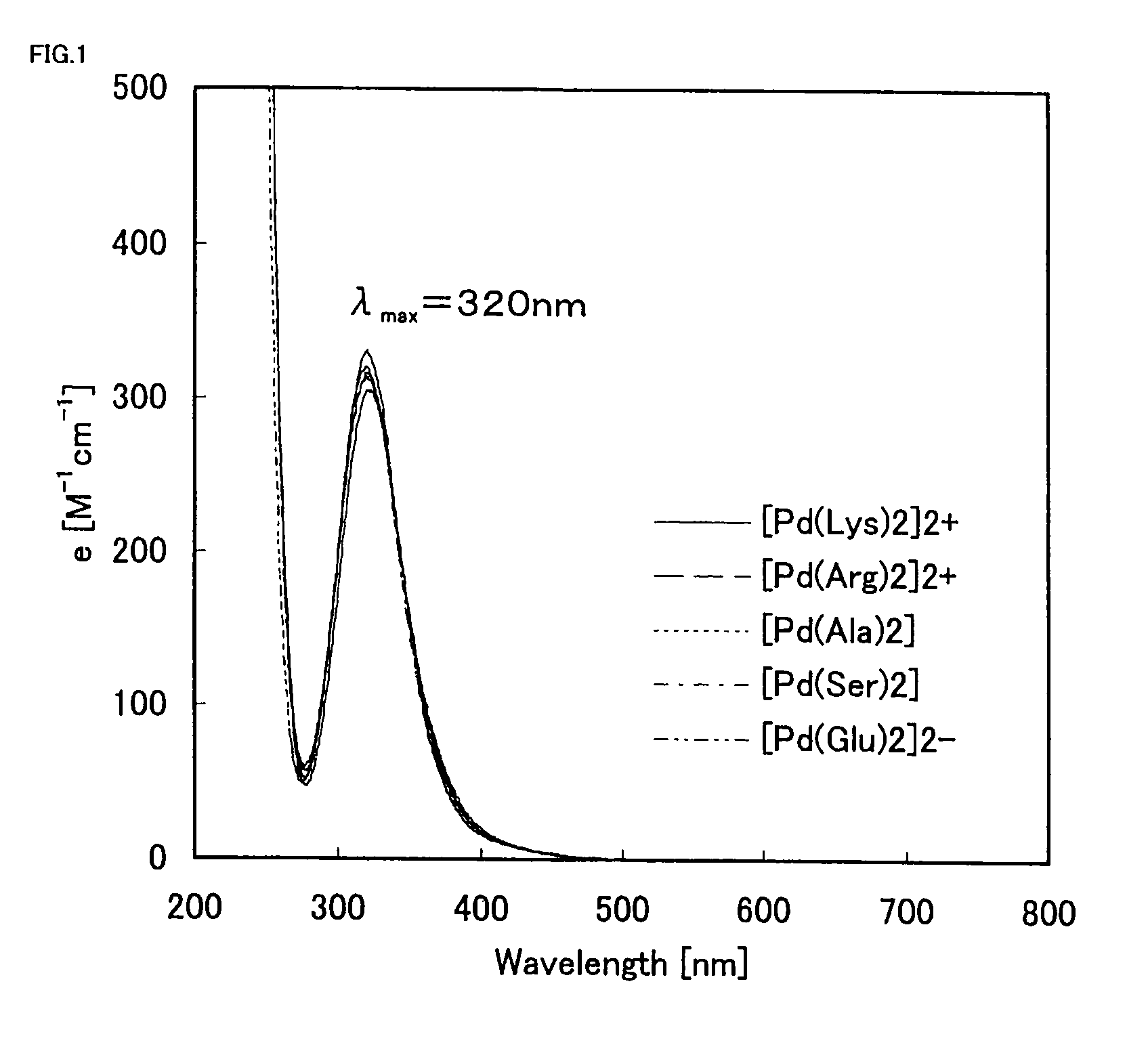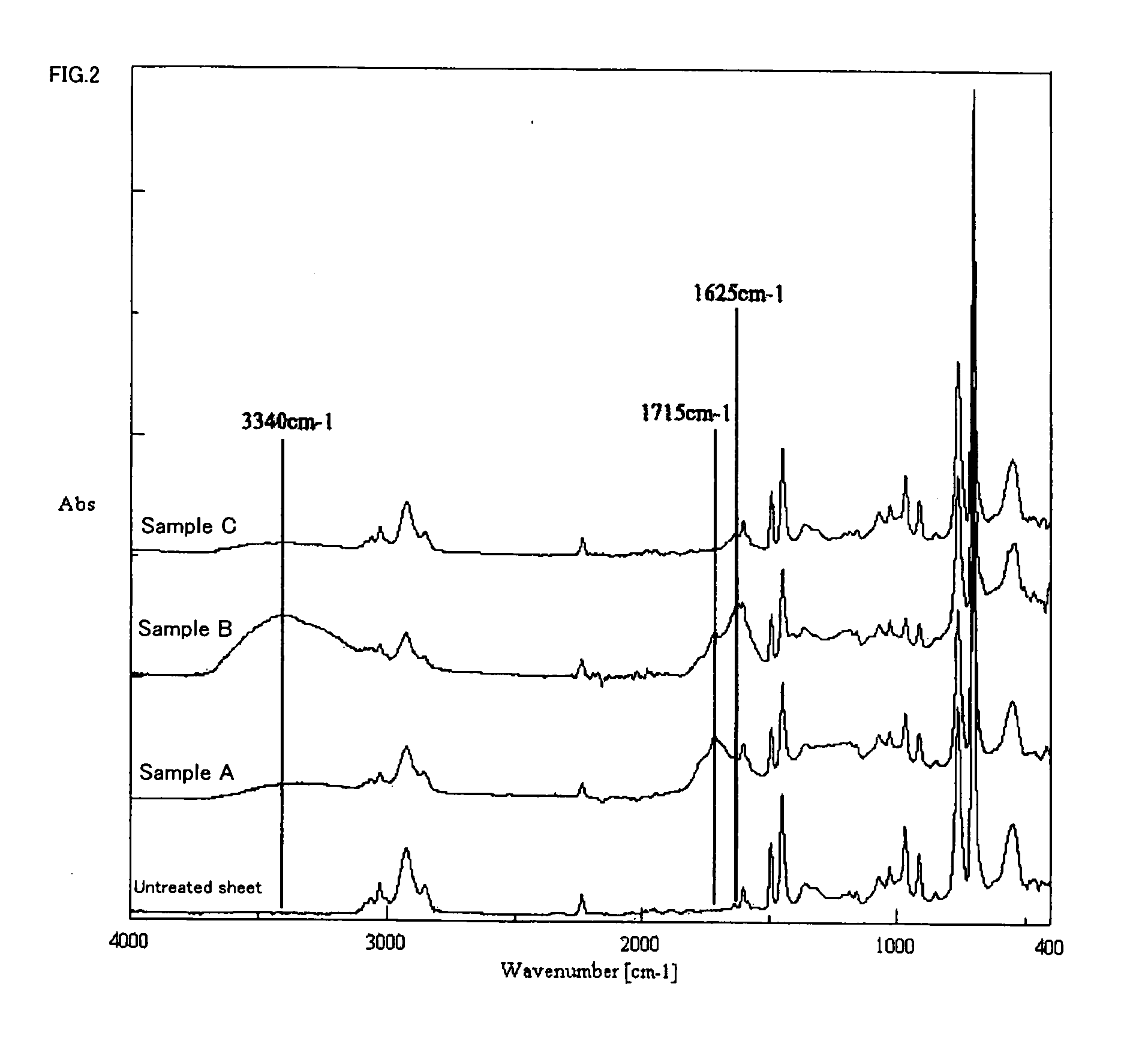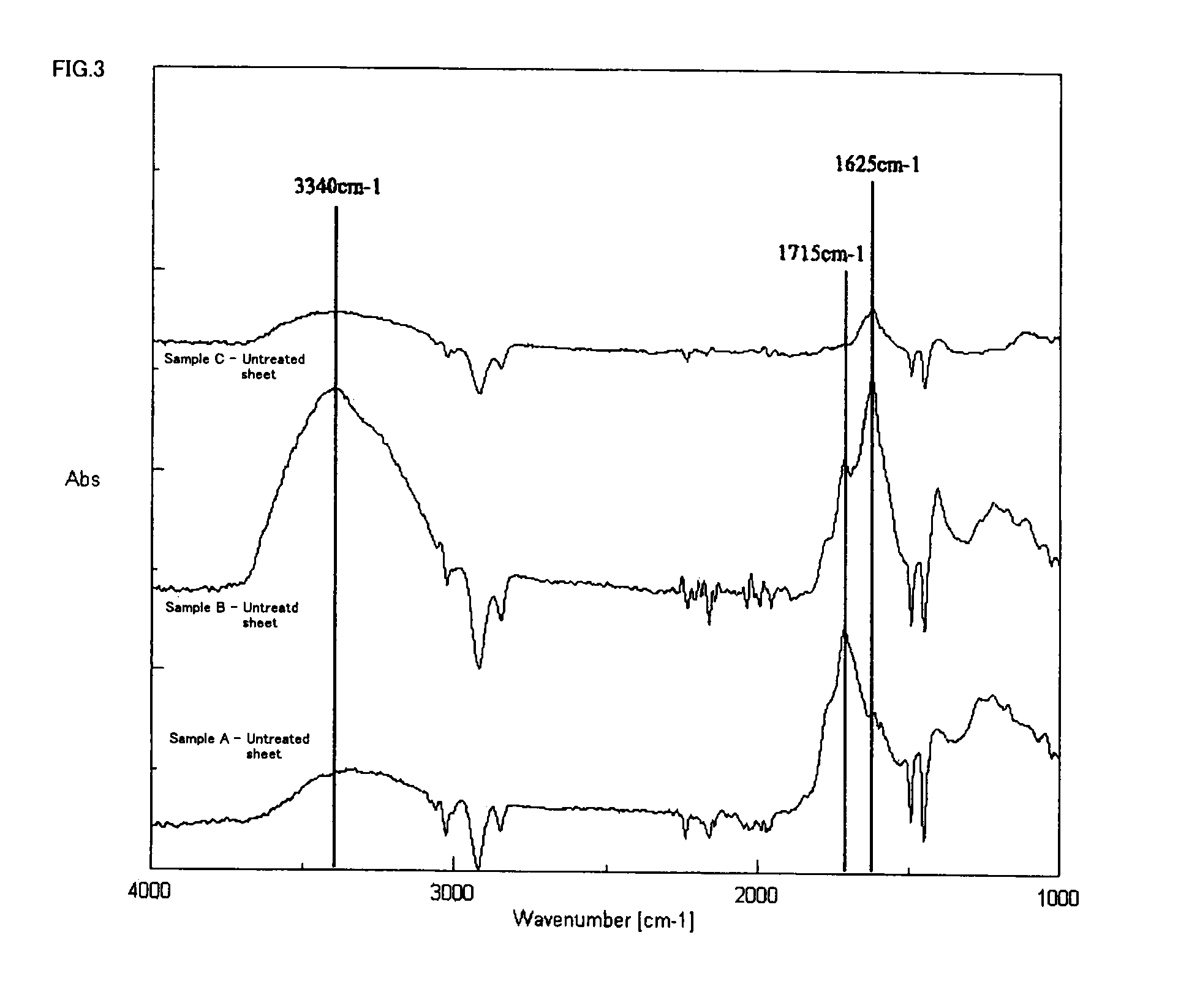Palladium complex and catalyst-imparting treatment solution using the same
a technology of catalyst and complex, which is applied in the direction of liquid/solution decomposition chemical coating, physical/chemical process catalyst, metal/metal-oxide/metal-hydroxide catalyst, etc., can solve the problems of increasing the cost of copper-clad polyimide substrate, difficulty in reducing copper foil thickness, and disadvantageous unsuitable methods for fine patterning
- Summary
- Abstract
- Description
- Claims
- Application Information
AI Technical Summary
Benefits of technology
Problems solved by technology
Method used
Image
Examples
example 1
Synthesis of Palladium Complex (I)
(1) Palladium-bislysinate Complex [Pd(Lys)2]2+
[0044]0.21 g of palladium chloride (special grade, available from Toyo Chemical Industrial Co., Ltd.) and 0.52 g of L-lysine hydrochloride salt (special grade, available from Wako Pure Chemical Industries, Ltd.) were added to 500 mL of pure water, the pH was adjusted to 6.0 by potassium hydroxide (special grade, available from Wako Pure Chemical Industries, Ltd.), and the mixture was stirred at 70° C. for 1 hour to obtain a processing solution for catalyst application having an equivalent metallic palladium concentration of 250 mg / L.
(2) Palladium-bisarginate Complex [Pd(Arg)2]2+
[0045]0.21 g of palladium chloride (special grade, available from Toyo Chemical Industrial Co., Ltd.) and 0.59 g of L-arginine hydrochloride salt (special grade, available from Wako Pure Chemical Industries, Ltd.) were added to 500 mL of pure water, the pH was adjusted to 6.0 by potassium hydroxide (special grade, available from W...
example 2
Structure of Palladium-Amino Acid Complex
[0051]It is widely known that [Pd(Ala)2] has such a planar tetracoordination structure that the amino groups and carboxyl groups are coordinated to form 5-membered chelate rings as follows.
[0052]The 3 palladium-amino acid complexes of [Pd(Lys)2]2+, [Pd(Ser)2], and [Pd(Glu)2]2− have amino groups, hydroxyl groups, and carboxyl groups in side chains of the amino acid ligands respectively. It was thought that the functional groups in the side chains could be coordinated to palladium, so that the palladium complexes were subjected to ultraviolet-visible absorption spectrum measurement to confirm whether the functional groups are coordinated to palladium or in the free states. In the ultraviolet-visible absorption spectrum measurement, UV-2500PC (manufactured by Shimadzu Corporation) was used under conditions of a cell length of 1 cm and a temperature of 25° C. The results of the measurement are shown in FIG. 1.
[0053]As a result, all the palladium-...
example 3
Adsorption of Palladium Complex (I) to Carboxyl Group
[0054]Using the nonbasic palladium-amino acid complexes synthesized in Comparative Example 1, the amounts of the palladium complexes adsorbed to resin surfaces and the electroless plating deposition properties of the complexes were measured, and thereby whether the free cationic groups of the amino group and the guanidyl group in the palladium complex (I) interact with carboxyl groups on resin surfaces or not was evaluated.
[0055]A polyimide resin (KAPTON 100-EN available from Du Pont-Toray Co., Ltd.) was modified to have carboxyl groups and treated with each palladium-amino acid complex by the following processes. The electroless nickel plating deposition property of the resultant and the amount of adsorbed palladium after the reduction treatment were measured by Shimadzu sequential plasma emission spectrometer (manufactured by Shimadzu Corporation). The operation processes are shown below and the measurement results are shown in ...
PUM
| Property | Measurement | Unit |
|---|---|---|
| Temperature | aaaaa | aaaaa |
| Temperature | aaaaa | aaaaa |
| Time | aaaaa | aaaaa |
Abstract
Description
Claims
Application Information
 Login to View More
Login to View More - R&D
- Intellectual Property
- Life Sciences
- Materials
- Tech Scout
- Unparalleled Data Quality
- Higher Quality Content
- 60% Fewer Hallucinations
Browse by: Latest US Patents, China's latest patents, Technical Efficacy Thesaurus, Application Domain, Technology Topic, Popular Technical Reports.
© 2025 PatSnap. All rights reserved.Legal|Privacy policy|Modern Slavery Act Transparency Statement|Sitemap|About US| Contact US: help@patsnap.com



